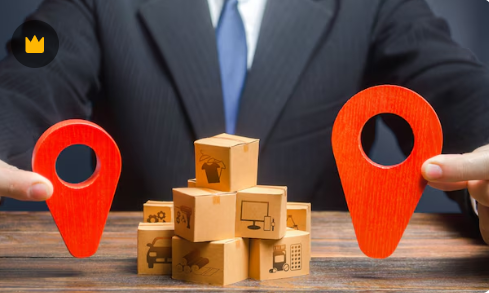
Table of Contents
- Why Supplier Tiering Matters in Scope 3.1?
- Tier-by-Tier Breakdown and Strategy
- Tier 1 Suppliers (Direct Suppliers)
- Tier 2 Suppliers (Suppliers to Tier 1)
- Tier 3 Suppliers (Suppliers to Tier 2)
- The Right Data from the Right Tier: A Practical Framework
- ROI Metrics from Tier-Based Approach
- Next Steps for Smarter Supplier Data Collection
- Conclusion
- FAQs
- Should I collect emissions data from all suppliers?
- How do I determine which Tier 2 suppliers are "strategic"?
- What if my priority suppliers don't respond?
- Can I use average emissions factors instead of direct data?
- How long should I give suppliers to start reporting?
Scope 3.1 emissions, linked to purchased goods and services, are notoriously difficult to quantify. Why? Because the data lies deep in your supply chain, often across thousands of suppliers. Yet not every supplier should be treated equally in your data collection strategy.
Chasing data from every tier can lead to wasted resources, frustration, and reporting fatigue. The key lies in strategic prioritisation.
In this guide, we break down the differences between Tier 1, Tier 2, and Tier 3 suppliers, and explain how to determine who you really need emissions data from to meet your Scope 3.1 goals efficiently and credibly.
Why Supplier Tiering Matters in Scope 3.1?
Collecting high-quality emissions data from the right suppliers is the unlock for scalable Scope 3.1 reporting. Here’s why:
- Over 80% of emissions in many manufacturing firms come from upstream suppliers (McKinsey).
- Most companies engage 1000+ suppliers, but fewer than 10% typically report emissions data (CDP), hence you don’t need data from everyone, you need data from the right ones.

Tier-by-Tier Breakdown and Strategy
Tier 1 Suppliers (Direct Suppliers)
Priority: HIGH - Target 80-90% engagement
Prioritisation Criteria:
- Top 20% by annual spend
- High carbon-intensive categories (metals, chemicals, energy)
- Strategic or sole-source suppliers
Challenge: Tier 1 suppliers are the most direct contributors to your carbon footprint, but many lack emissions reporting capabilities or standardised data formats.
Solution & Practical Steps:
- Start with your top 10-20 suppliers by spend and emissions intensity
- Provide standardised data request templates with clear deadlines
- Offer training sessions or one-on-one support for key suppliers
- Set phased expectations: basic energy data first, then detailed product-level emissions
- Use automated reminders and progress tracking
- Implement comprehensive end-to-end automated supplier engagement and carbon calculation using integrated platforms like Mavarick
Expected Outcome: These suppliers typically represent 60-80% of your Scope 3.1 emissions despite being a minority of your supplier base.
Tier 2 Suppliers (Suppliers to Tier 1)
Priority: MEDIUM - Target strategic engagement only
Prioritisation Criteria:
- Critical raw materials or components (rare earth metals, specialised chemicals)
- High-emissions processes (steel production, semiconductor manufacturing)
- Tier 1 suppliers with limited visibility into their own supply chain
Challenge: Tier 2 suppliers are harder to engage directly and may resist data requests from companies they don't have direct contracts with.
Solution & Practical Steps:
- Work through your Tier 1 suppliers to cascade data requests
- Focus on categories known for high emissions intensity
- Use industry-specific emission factors for non-critical Tier 2 suppliers
- Partner with industry associations or consortiums for shared data collection
Expected Outcome: Strategic Tier 2 engagement can capture an additional 10-15% of your emissions while requiring much more effort than Tier 1.
Tier 3 Suppliers (Suppliers to Tier 2)
Priority: LOW - Use estimates unless strategically critical
Prioritisation Criteria:
- Only engage if they're sole sources of critical, high-emissions materials
- Raw material producers in carbon-intensive industries
- Suppliers with unique environmental impact (mining, oil extraction)
Challenge: Tier 3 suppliers are multiple steps removed and rarely willing to provide detailed emissions data to companies they've never heard of.
Solution & Practical Steps:
- Default to industry emission factors and databases (IDEMAT, Ecoinvent)
- Use spend-based calculations with sector-specific intensities
- Focus engagement only on suppliers representing >1% of total emissions
- Leverage third-party data providers and industry benchmarks
Expected Outcome: Estimates typically cover 95% of Tier 3 impact with minimal resource investment.
The Right Data from the Right Tier: A Practical Framework
Phase 1: Foundation (Months 1-3)
- Map top 20% of suppliers by spend across all tiers
- Calculate carbon intensity estimates using spend-based factors
- Identify your "Big 15" - highest impact Tier 1 suppliers
- Launch pilot program with 3-5 willing early adopters
Phase 2: Scale Tier 1 (Months 4-8)
- Roll out data requests to all priority Tier 1 suppliers
- Implement automated tracking and reminder systems
- Provide training and support resources
- Begin using partial data for interim reporting
Phase 3: Strategic Expansion (Months 9-12)
- Selectively engage critical Tier 2 suppliers
- Establish supplier performance metrics and recognition programs
- Integrate primary data with ERP systems for ongoing tracking
- Develop supplier scorecards including emissions performance
Resource Allocation Guide:
- 70% of effort on Tier 1 suppliers
- 25% on strategic Tier 2 engagement
- 5% on critical Tier 3 or new supplier onboarding
Use platforms like Mavarick to automate outreach, track progress, and validate data quality across all tiers without overwhelming your sustainability team.
ROI Metrics from Tier-Based Approach
Resource Efficiency: 80% less time spent per emission data point collected
Data Quality: 3 times improvement in primary data vs. estimates ratio
Cost Avoidance: $180K annual savings vs. comprehensive supplier engagement
Compliance Readiness: 95% audit-ready data coverage in first year
Next Steps for Smarter Supplier Data Collection
Want to stop spinning your wheels chasing every supplier?
- Use the tiering approach to identify top-priority suppliers
- Start data requests with clear templates and expectations
- Automate follow-ups with a dedicated platform
- Fill gaps using industry emission factors for lower-tier suppliers
Want to simplify Scope 3.1 supplier reporting?
Conclusion
You don’t need to collect data from every supplier, you need to collect the right data from the right suppliers.
By segmenting and prioritising across Tier 1, 2, and 3, companies can reduce reporting complexity, lower costs, and dramatically improve data quality.
Start with Tier 1. Expand strategically. And let technology and proxies support you where direct data isn’t feasible.
For Scope 3.1 success, smart prioritisation is your secret weapon.
FAQs
Should I collect emissions data from all suppliers?
No, focus on Tier 1 suppliers representing 80% of your spend and strategic Tier 2 suppliers in high-emissions categories. Use estimates or secondary data for the rest.
How do I determine which Tier 2 suppliers are "strategic"?
Look for suppliers providing critical components in carbon-intensive categories (metals, chemicals, energy), sole-source relationships, or where your Tier 1 suppliers have limited supply chain visibility.
What if my priority suppliers don't respond?
Start with automated reminders, offer training support, and consider contract language requiring emissions reporting. Begin with your most collaborative suppliers to build momentum.
Can I use average emissions factors instead of direct data?
Yes, especially for Tier 2/3 suppliers. Use spend-based calculations with industry-specific emission factors. Be transparent about methodology in your disclosures and gradually replace estimates with primary data where feasible.
How long should I give suppliers to start reporting?
Set realistic timelines: 3-6 months for basic energy data from Tier 1 suppliers, 6-12 months for detailed product-level emissions. Allow longer for smaller suppliers who need to build capabilities.
Carbon Accounting System
Carbon Emissions Reporting for the Supply Chain
- Visible Supply Chain
- Quality Data You can Trust
- Auditable Reports

